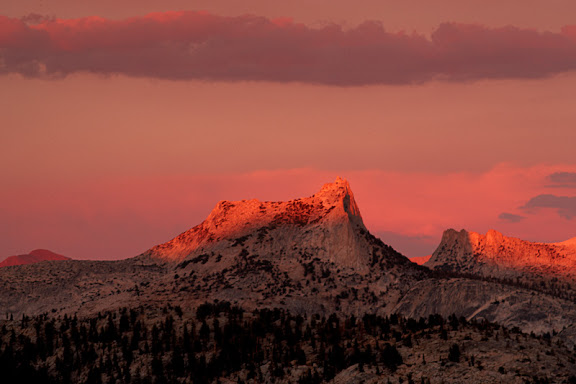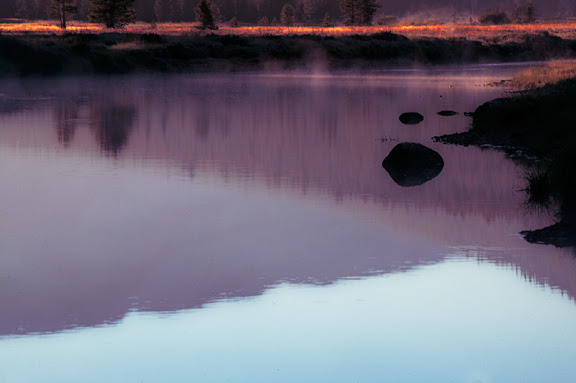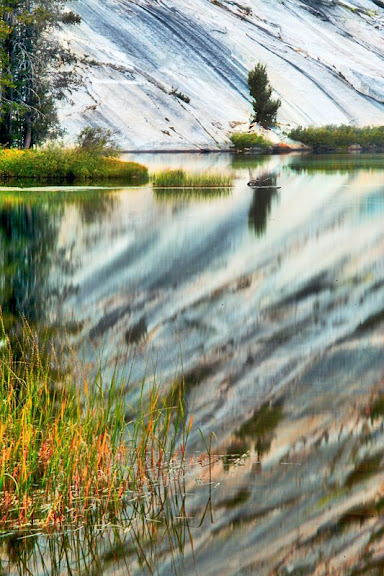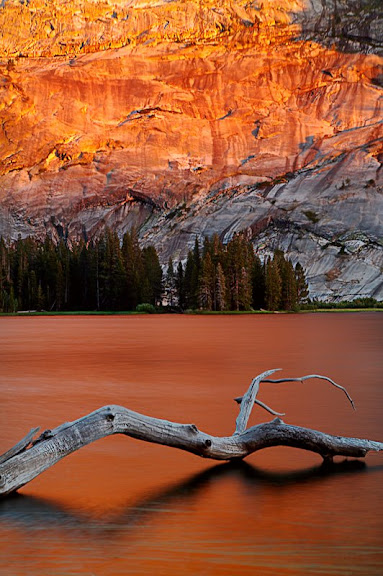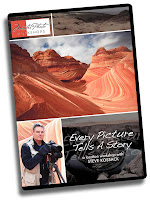 "Well, I'll start by saying it was a fun trip for me -- doing an in-the-field workshop exclusively for the video team directed by Gregory McKean. We followed as our theme the DVD's title, Every Picture Tells a Story. So let's talk about the stories I tried to tell by these images produced in the process.
"Well, I'll start by saying it was a fun trip for me -- doing an in-the-field workshop exclusively for the video team directed by Gregory McKean. We followed as our theme the DVD's title, Every Picture Tells a Story. So let's talk about the stories I tried to tell by these images produced in the process."If we believe in putting the horse before the cart, then we need to begin each photograph by asking -- and answering -- the question 'what is the story?' before deciding how we will say it. These are the two basic steps that prescribe every photograph I make. When I take my workshops into the field, I feel I am revealing a part of myself. It’s almost like asking 'how do you like my place?' Even if they like the location, the challenging part has just begun. I try to explain why I brought them to this place and how we can all go about setting the story of this place into pictures. Let's revisit four of the places featured in the video.
The Wave of Sandstone and Light
"Everyone should see and experience this amazing place in southern Utah called The Wave -- not just this spot but the entire area. With or without photo gear in hand, this is one of the great places anywhere on Earth. No matter how many times I’ve been here, it always holds the power to surprise and delight! The story here on this day was the light and the weather that created that light. This is a good place to be a couple hours after sunrise and to have patience if bad weather is passing through. By waiting for the shadows to deepen and the cloud pattern to open just above Top Rock pictured here in the middle distance, I set up my composition low and wide to show how I think the formation got its name and then opened the view even more to show the lines moving away. The Singh-Ray ColorCombo helped both the color saturation and contrast in the clouds. It also helped control the reflected glare in the highlights. A 3-stop soft-step ND Grad was used to balance the exposure in the shadows with the highlights on the right side and in the sky. I intentionally burned the left corner to aid the eye in finding Top Rock and the cloud opening quickly.
 Coyote Buttes
Coyote Buttes"Telling the story of this place in the spectacular wilderness spanning the Utah-Arizona border is to follow the continuous surface erosion and its constant shifting through flash floods into the canyons and washes. A favorite topic of mine has always been the struggle for life that goes on here. In this case, it's been an unsuccessful struggle for the tree in the foreground. The story contains all the elements except the floods themselves, which I think adds both mystery and anticipation. In order to straighten the buttes overhead at this low angle, a Canon tilt/shift lens was used along with the ColorCombo to heighten contrast in the clouds. A 2-stop soft-step ND Grad was then placed in front of the ColorCombo to further balance the exposure. Of the various images taken during our DVD shoot, this one is perhaps the strongest of the storytellers.
 Cactus amid the Color
Cactus amid the Color"In the DVD we demonstrated how this image of a small subject in a small place was visualized and made. A simple scene to be sure, however achieving this image took some deep thought as well as trial and error. Looking at all the elements dictated a slow study of what those elements were and how to accentuate them. As we went through the filter kit trying to bring forward different parts of the 'life on the rocks' story, we discovered several possibilities. In this image, we finally came up with an added touch of contrasting color in the overhead rocks by polarizing the reflected light with the Gold-N-Blue Polarizer.
Horseshoe Bend in Another Light
"The DVD also includes a visit to this bend of the Colorado River that's long been an icon of the American Southwest. Having seen so many images of this spectacular scene for many years, visiting photographers can find our preconceptions of Horseshoe Bend to be both an advantage and disadvantage in terms of telling our own story of what we are suddenly seeing with our own eyes. In most pictures, the story involves not only the rhythmic bend of the river or how deep the canyon is, but also the continuous variations in weather, time of day and the ever-changing light that's not at all controllable.
 "For me the weather and position of the sun on this day made the reflected blue light the key aspect of this story. The composition was adjusted to show more sky than I would usually include. This eliminated some of the foreground but I was careful not to exclude the rock faces that give the visual perspective needed for scale and scope. The clouds set up perfectly for counter balance. They appear to be moving left to right, which is usually the way we see, and the river appears to moving with them -- although, in reality, the river flows in the opposite direction and the clouds had very little movement and I realized the low light would end long before another composition was possible. Exposing for the water reflection was the main challenge. I balanced everything from there. An LB Color Intensifier was used in this frame to avoid losing the reflected blue from the water. I wanted to balance the cold blue with the warmth of the sunlit cliffs. A 4-stop, hard-step ND Grad was used to hold back both the sky and light of the cliffs in the distance."
"For me the weather and position of the sun on this day made the reflected blue light the key aspect of this story. The composition was adjusted to show more sky than I would usually include. This eliminated some of the foreground but I was careful not to exclude the rock faces that give the visual perspective needed for scale and scope. The clouds set up perfectly for counter balance. They appear to be moving left to right, which is usually the way we see, and the river appears to moving with them -- although, in reality, the river flows in the opposite direction and the clouds had very little movement and I realized the low light would end long before another composition was possible. Exposing for the water reflection was the main challenge. I balanced everything from there. An LB Color Intensifier was used in this frame to avoid losing the reflected blue from the water. I wanted to balance the cold blue with the warmth of the sunlit cliffs. A 4-stop, hard-step ND Grad was used to hold back both the sky and light of the cliffs in the distance."You can see more of Steve's story-telling landscapes of the American West and check out his schedule of future workshops by visiting his website.
